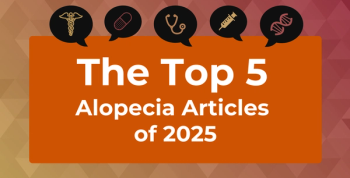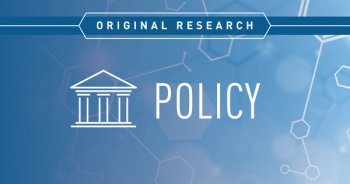
US Biosimilars Substantially More Expensive Than Those in Germany, Switzerland
Due to anticompetitive practices, the United States lags Germany and Switzerland in the number of biosimilars on the market, while also having substantially higher prices for both biosimilars and reference products.
Compared with Germany and Switzerland, biosimilars were slower to come to the market in the United States between 2011 and 2020, which indicates a need in the United States for policies targeting anticompetitive practices, according to a study
Since biosimilars have the capability of spurring competition against expensive biologics, and thus, lowering prices, countries have developed policies to help get biosimilars to market. “However, studies have shown that there are varying policies and biosimilar uptake in European countries and that the observed levels of competition and uptake have not reached the expected levels in the US,” the authors wrote.
Researchers from the University of Zurich, London School of Economics and Political Science, and the Drug Commission of the German Medical Association assessed uptake and prices of biosimilars in the United States and compared them with Germany and Switzerland, which have national drug price negotiation mechanisms in place.
They used publicly available databases to identify all reference biologics and biosimilars that were approved in the 3 countries through August 2020. Prices from January 1, 2011, to December 31, 2020, were assessed.
There were some differences between the United States and European countries in the qualification of biosimilars:
- Drugs with enoxaparin or terparatide are considered biosimilars by the European Medicines Agency (EMA) but are not approved by the biosimilar pathway in the United States.
- Follow-up drugs with the same active ingredient not approved by the US biosimilar pathway or as a biosimilar by the EMA were excluded. As a result, products—both reference and biosimilars—with the active ingredient filgrastim and somatropin were excluded.
- Products were only considered if an approved biosimilar had launched. For instance, there are 7 adalimumab biosimilars approved in the United States, but the first will launch January 2023.
A total of 15 biosimilars and 6 reference products were included for the United States, 52 biosimilars and 15 reference products for Germany, and 28 biosimilars and 13 reference products for Switzerland. The United States analysis did not include products including enoxaparin sodium, filgrastim, teriparatide, insulin glargine, and insulin lispro because they were not approved through the biosimilars pathway. In addition, adalimumab and etanercept biosimilars were excluded since none of them have launched yet due to legal disputes.
In the United States, bevacizumab uptake was highest 1 year after market entry at 36%, while infliximab had the lowest uptake after 1 year at just 3%. In Germany, adalimumab uptake was highest (48%) and insulin lispro (2%) was lowest after 1 year on the market. In Switzerland, rituximab had the highest uptake (25%), while insulin glargine (1%) had the lowest after 1 year.
In a comparison of the 6 products on the market with at least 1 biosimilar in all 3 countries, the researchers found that while market share was highest in Germany, it grew at a faster rate in the United States.
“Biosimilars in the US that entered the market more recently were estimated to experience a faster uptake (as measured by the market share 1 year after launch), whereas in Germany and Switzerland the coefficients were small and not significant,” the researchers noted.
Prices for biosimilars varied greatly across the 3 countries. In the United States, biosimilars had relative prices that were between 55% and 90% that of the reference products. In Switzerland, biosimilars also had lower prices at market entry with prices ranging between 70% and 90% of the reference price. However, in Germany, trastuzumab and pegfilgrastim biosimilars actually entered the market at higher prices compared with the reference products. For the remaining biosimilar products entering the German market, relative prices were between 65% and 100% of the reference price.
For the 6 products with biosimilars in all 3 countries, the United States and Switzerland had similar relative prices. Prices were highest in Germany.
Monthly treatment costs were higher than the costs in Germany and Switzerland. Median monthly treatment costs per patient were $8987 for biosimilars in the United States compared with $932 in Germany and $1351 in Switzerland. The median monthly treatment costs for reference products were $11,503 in the United States compared with $1285 in Germany and $1801 in Switzerland.
“Policies for drug pricing negotiations in the US against anticompetitive practices of exclusionary contracts could allow biosimilars to enter the market sooner and at lower costs, which could result in lower health care costs and improved patient access,” the authors concluded.
Reference
Carl DL, Laube Y, Serra-Burriel M, Naci H, Ludwig W-D, Vokinger KN. Comparison of uptake and prices of biosimilars in the US, Germany, and Switzerland. JAMA Netw Open. 2022;5(12):e2244670. doi:10.1001/jamanetworkopen.2022.44670
Newsletter
Stay ahead of policy, cost, and value—subscribe to AJMC for expert insights at the intersection of clinical care and health economics.








































